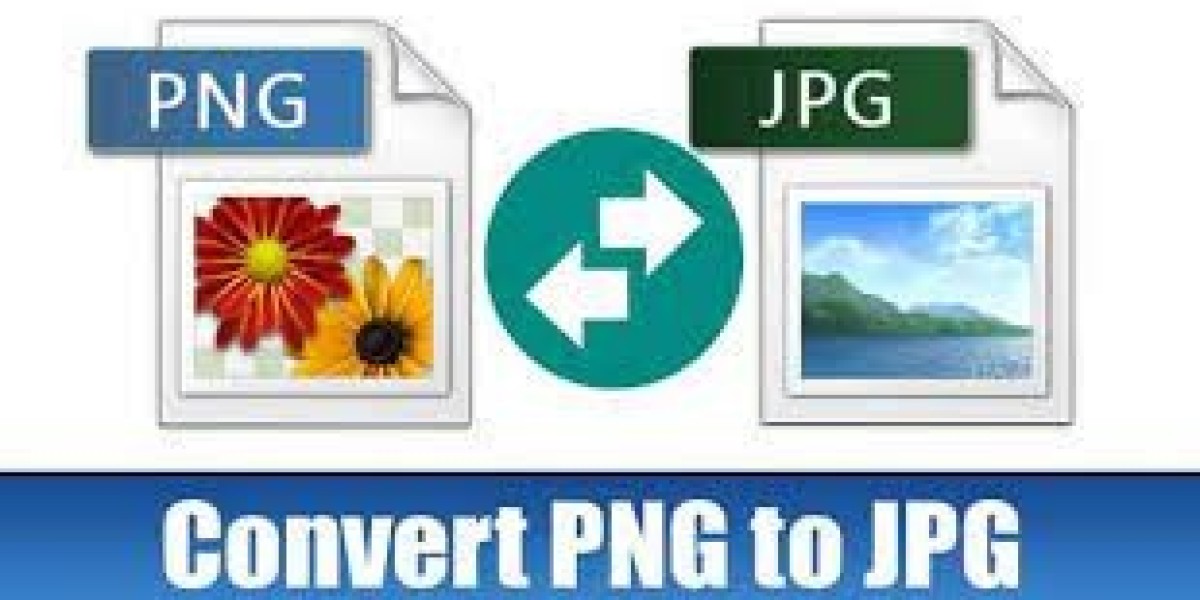Top 5 Reasons to Convert PNG to JPG on Mac
Do you frequently work with images on your Mac and find yourself struggling with large, clunky PNG files? Perhaps you've noticed that certain websites or software applications struggle to render PNG files properly, leading to compatibility issues and slow loading speeds. Whatever the case may be, if you're looking for a solution to optimize your image files on Mac, converting from PNG to JPG could be just what you need.
In this article, we'll explore the top 5 reasons why converting from PNG to JPG on Mac is a smart move for any designer or content creator. We'll also provide step-by-step instructions for how to convert your images using built-in Mac tools or third-party software options. With our expert advice and guidance, you can expect faster loading speeds, improved compatibility across platforms and devices, and enhanced printing quality - all while enjoying smaller file sizes that don't take up unnecessary storage space.
PNG and JPG: What's the Difference?
Before diving into why you might want to convert PNG to JPG on Mac, it's important to understand the fundamental differences between these two image file formats. PNG, or Portable Network Graphics, was created as a replacement for GIF files and offers lossless compression, meaning that there is no loss in quality when compressing an image. Additionally, PNG supports transparency and can be ideal for more complex images like graphics or logos. On the other hand, JPG (or JPEG), short for Joint Photographic Experts Group, is a compressed format that is best suited for photographs or images with a lot of detail. While it does not support transparency like PNG, JPG files are much smaller in size compared to their PNG counterparts.
So why does this matter? Well, depending on what you're using an image for – whether it's for web design or printing – one format may be more suitable than the other. By understanding the differences between these two formats, you can make an informed decision about which one will work best for your needs.
Why Convert PNG to JPG on Mac?
Converting PNG files to JPG format on a Mac is a simple process that can have significant advantages. While PNG is a high-quality image format that supports transparency and lossless compression, it has some limitations that make it less suitable for certain applications. By converting your PNG images to JPG format, you can overcome these limitations and take advantage of the benefits that come with this more versatile file format.
JPG files are widely supported by web browsers, software applications, and mobile devices. They are also smaller in size than PNG files, making them ideal for faster loading speeds and lower bandwidth usage. In this article, we'll explore the top 5 reasons why you should consider converting your PNG images to JPG format on a Mac.

Top 5 Reasons to Convert PNG to JPG on Mac
When it comes to digital images, there are a variety of file formats available, each with its own unique advantages and disadvantages. However, two of the most popular image file formats are PNG (Portable Network Graphics) and JPG (Joint Photographic Experts Group). While both formats have their uses, there are several reasons why converting PNGs to JPGs on a Mac can be beneficial.
1.Compatibility: One of the primary reasons for converting PNGs to JPGs is compatibility. While many devices and software support both file types, some may only accept one or the other. By converting your images to JPG format, you can ensure that they are compatible with a wider range of devices and programs.
2. Smaller File Sizes: Another significant benefit of using JPG format is the ability to create smaller file sizes without sacrificing quality significantly. This makes it easier to store and share images online or through email without taking up too much space or slowing down your device.
3. Faster Loading Speeds: Since JPG files are typically smaller in size than PNG files, they also tend to load faster on websites or in apps that display them. This can be especially important for those who rely heavily on image-heavy content in their online presence.
4. Less Bandwidth Usage: Since smaller file sizes mean less data transfer is required when uploading or downloading images online, using JPG format can also save you bandwidth usage costs over time.
5. Better Printing Quality:
Reason #1: Compatibility
One of the primary reasons to convert PNG to JPG on Mac is compatibility. While PNG files are great for preserving transparency in images and providing high-quality graphics, they are not always compatible with all types of software. Some applications may not support PNG files, causing them to appear distorted or not display at all.
JPG files, on the other hand, are widely supported across different platforms and devices. This means that if you need to share your image file with others or use it in various applications, converting it to JPG will ensure its compatibility. Whether you're uploading images to a website or sending them via email, using JPG format guarantees that your files will display correctly and without any issues.
In short, when it comes to compatibility, converting PNG to JPG is a smart move that can save you time and hassle in the long run.
Smaller File Sizes
One of the main reasons to convert PNG images to JPG on a Mac is to reduce file size. PNG files can be quite large due to their high-quality and lossless compression format. This may not be an issue if you have plenty of storage space, but it can cause problems if you need to share or upload the image.
Converting PNGs to JPGs can significantly reduce file sizes while maintaining good quality. The JPG format uses lossy compression, which means that some data is discarded during compression. However, this does not always result in noticeable differences in image quality, especially if the compression level is set appropriately.
Reason #3: Faster Loading Speeds
One major benefit of converting PNG to JPG on Mac is faster loading speeds. PNG files are often larger in size than JPG files, which can significantly slow down website loading times. By converting PNG images to JPG, you can reduce the file size of the images and improve page load times. This is especially important if you have a website with a lot of high-resolution images or if your site has a large number of visitors.
In addition to improving website performance, faster loading speeds can also improve user experience. Studies have shown that users are more likely to abandon websites that take too long to load, leading to lost traffic and potential revenue. By optimizing your image file sizes through conversion from PNG to JPG, you can ensure that your website loads quickly and keep visitors engaged.

Less Bandwidth Usage
Another reason why you should convert PNG to JPG on your Mac is because it can help reduce bandwidth usage. As mentioned earlier, PNG files are typically larger in size compared to JPG files. This means that when you upload PNG images online, it takes more time for them to load.
By converting PNG to JPG on your Mac, you can significantly reduce the amount of data that needs to be transferred. This is particularly useful if you have a website with a large number of images. By using smaller file sizes for your images, you can help improve the overall speed and performance of your website without sacrificing image quality.
In addition, reducing the amount of data transferred also helps users who have limited internet access or slower internet speeds. By using optimized images with smaller file sizes, users can access content faster and without any buffering issues.
Reason #5: Better Printing Quality
When it comes to printing images, the quality of the image is of utmost importance. PNG images have a higher resolution and more color depth compared to JPG images. However, this high quality comes with a price - larger file sizes and longer loading times.
Converting your PNG files to JPG on Mac can significantly improve printing quality without having to compromise on file size or loading speed. The conversion process removes some of the unnecessary data from PNG files, resulting in smaller file sizes without compromising much on image quality. This means that when you print your converted JPG images, you will get sharp and vivid prints with accurate colors.
Overall, if you want to print high-quality images without having to worry about long loading times or large file sizes, converting your PNGs to JPGs is the way to go. Whether it’s for personal use or professional printing needs, using JPG images can save you time and resources while still giving you top-notch printing results.
How to Convert PNG to JPG on Mac
Converting PNG to JPG on a Mac is a simple process that can be done in just a few steps. The easiest way to convert a single PNG file to JPG is by using the Preview app that comes pre-installed on all Macs. First, open the PNG file you want to convert in Preview. Then, click on "File" in the top menu bar and select "Export". In the drop-down box next to "Format", select "JPEG" and adjust any other settings as needed. Finally, click "Save" and your PNG file will be converted into a JPEG image.
If you have multiple PNG files that need converting, you can use the Batch Conversion feature in Preview. To do this, open all of the files you want to convert in Preview and then hold down the Command key while selecting each one. Once you have selected all of your files, click on "File" in the top menu bar and select "Export Selected Images...". From there, follow the same steps as before for converting a single file.
Another option for converting PNG files to JPEG on a Mac is by using third-party software such as Adobe Photoshop or GIMP. These programs offer more advanced editing features than Preview but may require more time and effort for those who are not familiar with them.
Alternative Methods for Converting PNG to JPG on Mac
If you prefer not to use Preview to convert your PNG files to JPG on Mac, there are other alternatives available. One popular option is Adobe Photoshop. This professional photo editing software can be used to convert PNG images to JPEG with high quality results. Simply open the PNG file in Photoshop, select "File" and then "Save As." Choose JPEG as the file format and adjust the compression level as needed.
Another option is using an online converter such as Convertio or Zamzar. These web-based tools allow you to drag and drop your PNG files onto their interface, select JPG as the output format, and then download the converted files back onto your computer. While convenient, keep in mind that using online converters may not always yield optimal results in terms of image quality.
No matter which method you choose, converting your PNG files to JPG on Mac can be done quickly and easily with just a few clicks. Experiment with different options until you find the one that works best for your needs.
Conclusion
In conclusion, converting PNG images to JPG format on a Mac can greatly enhance the overall user experience. From increased compatibility to faster loading speeds and smaller file sizes, there are numerous reasons to make the switch. Whether you're a professional graphic designer or simply looking to optimize your personal image files, converting PNGs to JPGs is an easy and effective solution. So why not give it a try and see for yourself the benefits of this simple but powerful conversion process?



